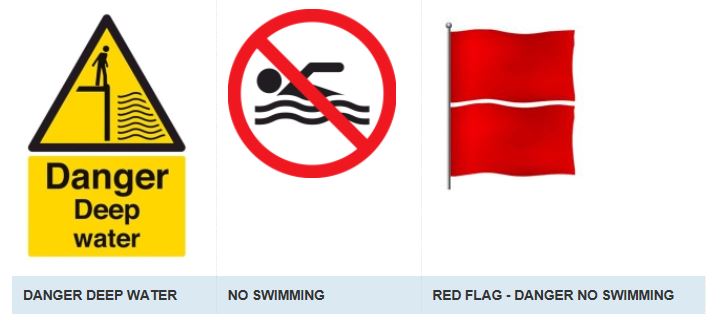Water safety
On this page ...
Water safety for your family
Drowning is the third highest cause of death among children in the UK, on average 40-50 children drown per year. Children can drown in 2cm of water so proper adult supervision is vital. Please make sure to:
- only let children go into depths that they are comfortable with
- keep your child well hydrated to reduce the risk of cramp
- use swimming aids if there is any doubt in their ability to swim
- teach your children to never run, push, or jump on others around water
Make sure that you and your loved one are not counted in next year's drowning figures by following these simple water safety tips at home:
- always use self-closing gates, fences, locks to prevent children from gaining access to pools of water
- securely cover all water storage tanks and drains
- empty paddling pools after use, turning them upside down so they don't collect water
- empty buckets when not in use
Each year UK citizens drown on holiday abroad by not being aware of the basic principles of water safety while on holiday. Having knowledge combined with understanding water hazards will reduce the number of water related accidents and deaths.
Most drownings are preventable.
If you are preparing for your summer holiday, follow these simple water safety tips to ensure your holiday is safe for you and your family:
- check if there is lifeguard cover at the pool/beach
- find out what local warning signs and flags mean so that you know the safest places to swim
- make sure the whole family can swim
- never swim alone
- swim with children that are in your care
- follow pool rules - don't dive in the shallow end
- never enter the water after drinking alcohol or taking drugs - this the number one cause of water-related deaths
- take time to check the depth, water flow and layout of pools
- when at the beach check when the tide will be high and low so you won't be cut off from the beach exit by the rising tide
- every year people drown from using inflatables/lilos in open water as they get blown out to sea
- do not swim or dive from rocks, piers , breakwater or coral
- swim parallel to the beach and close to the shore
- wear something on your feet - there may be sharp rocks, broken glass under the water
General water safety checklist
Here are a few things to remember:
- NEVER dive into a river, lake or ocean if you do know the depth and whether it is clear of hazardous objects
- swim within designated areas supervised by a lifeguard
- learn how to swim, and sign children up for swimming lessons
- teach children that swimming in open water is not the same as swimming in a pool. They need to be aware of uneven surfaces, river currents, ocean undertow and changing weather

What to do in an emergency
What to do if you have difficulties in water or if you see someone who is struggling in water:
- do not panic
- if you are able to bring yourself to the surface then do so and shout for help
- try to lie on your back and inhale a big amount of air, the human body is naturally buoyant if the lungs are filled with air. In this position:
- your full body will still be submerged in water by a few centimetres
- the chest should be close to the surface
- the head will be above the surface
- this is enough for your survival
- if you are caught in a big wave
- try and relax your body
- let the wave take you to the shore
- Don’t waste your air and energy by thrashing around
- try and relax, despite the desire to fight
If you see someone drowning, here are some steps to take to helping them:
- Keep alert: shout "Do you need help?", if they say yes or don't answer it is time to act
- Resist temptation: do not be tempted to jump in after them
- call 999 or 112: or ask someone else to call for help
- Shout and signal: for them to reach shallower water, remind them to kick their legs
- Find a rescue aid: if there is no public rescue aid equipment nearby throw anything that will float
- Safe rescue: get down on one knee or lie down so you don't fall in. Keep sight of the person which will help the emergency services locate them quicker